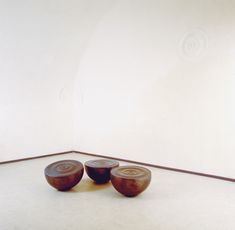Josef Trattner
Josef Trattner was born in 1955 in Semriach, Styria, Austria. From 1987 to 1982 he studied at the Academy of Fine Arts, Vienna, where he taught from 1996 to 2008. He is a member of the Vienna Secession. The artist participated internationally in group exhibitions and received numerous solo exhibitions, including 2020 Friedrich and Lillian Kiesler Foundation Vienna, 2009 Künstlerhaus Vienna, 2003 Graz "European Capital of Culture", 2002 Museumsquartier (MQ) Vienna, 1999 Museum of Applied Arts (MAK) and 1989 Secession Vienna. In 1988 he received a sponsorship award from the province of Salzburg, in 1989 the Austrian Art Sponsorship Award for Visual Arts, in 1991 the City of Vienna Sponsorship Award and in 2004 the Viktor Fogarassy Award for Visual Arts. Josef Trattner lives and works in Vienna and Radlbrunn, Lower Austria.
Trattner works interdisciplinarily with various forms of expression, including sculpture, photography, video, film, and performance. The Generali Foundation collection includes an installation from 1989, with which he takes up the theme of the stencil as a scheme and set of rules. A stencil served as the basis for a wall relief, which was used as a negative form for the surface design of three sculptural objects on the floor. Space and counterspace are created. The conditions of the sculptures are formally mirrored and reciprocal relationships are created. In this, an artistic line emerges early on, whose form of expression changes over the years, develops participatory and finally intertwines private and public space.
Since the 1990s, Trattner has preferred to work with foam, increasingly designing projects in public spaces and launching his own artistic format. In 2004 he again created a kind of stencil, this time for a formally reduced sofa made of pink foam. Initially, he set up this sofa, which always broke quickly and had to be identically remade, at various prominent locations in Vienna and invited people to sit on it in order to talk to them about various topics. This developed into extended "sofa journeys" that took the artist to over 60 cities in European countries such as Romania, Bulgaria, Poland and Turkey. The sofa as a private place, set up in public space, always serves as a meeting point for interdisciplinary exchange with representatives from the fields of visual art, literature, architecture and music. The photographic documentation of these conversations led to the publication of several publications.
